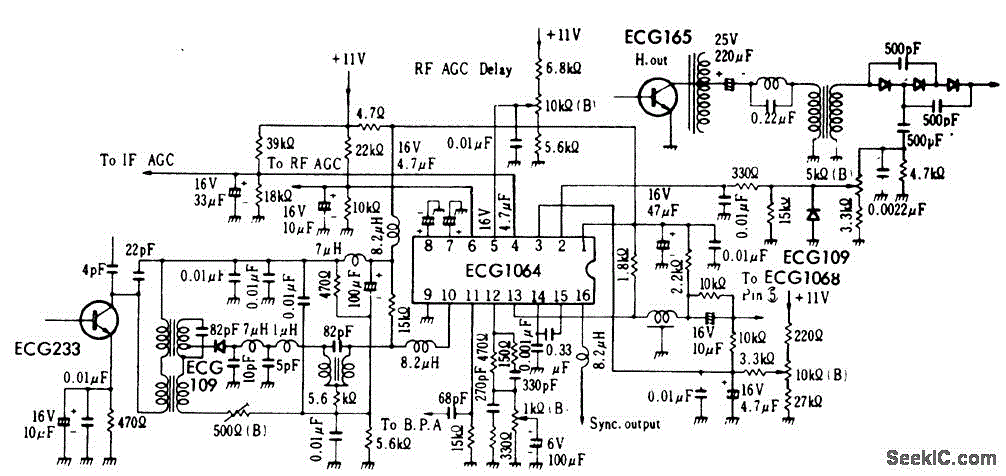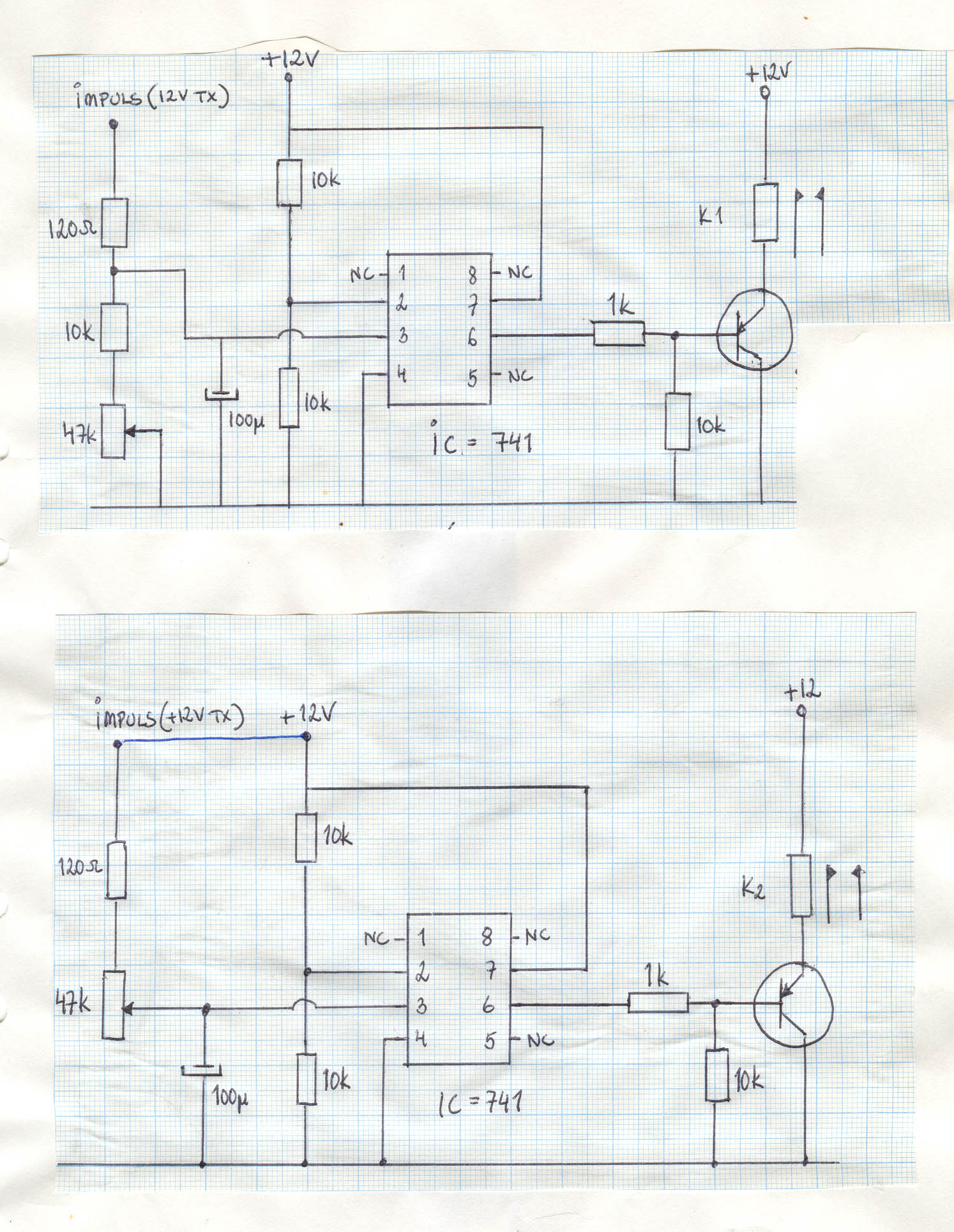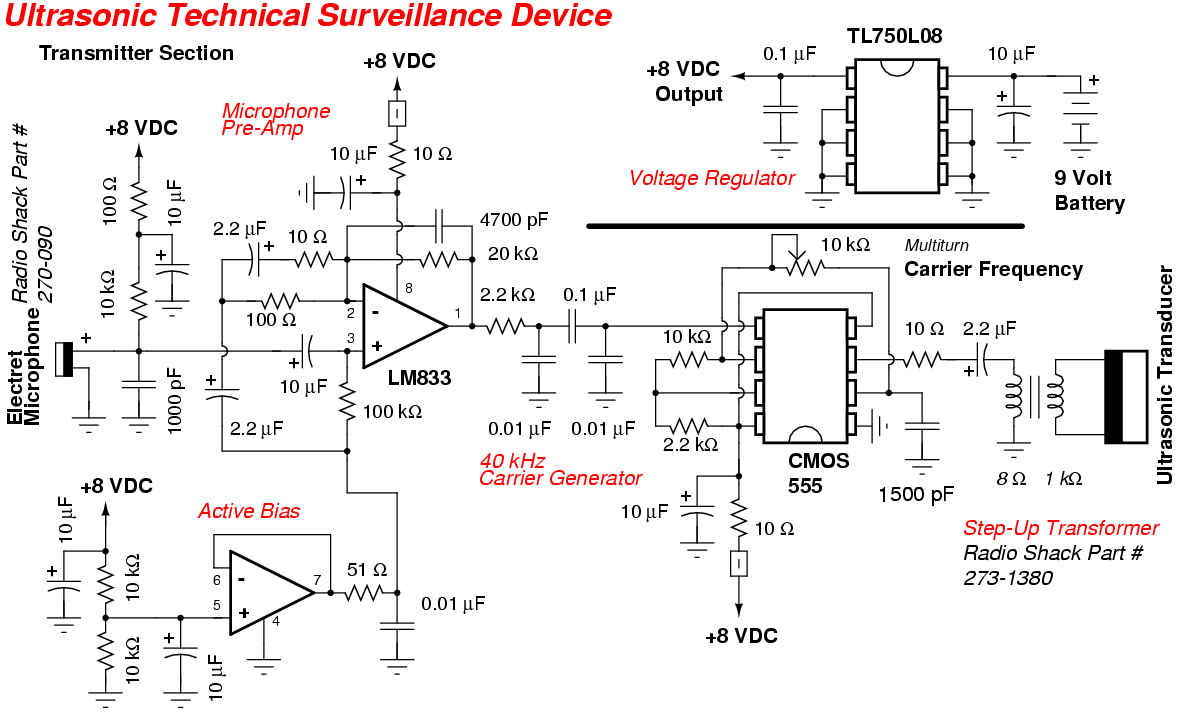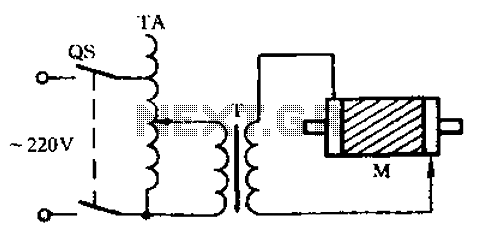
Carrier-Current Baby-Alert Receiver Circuit
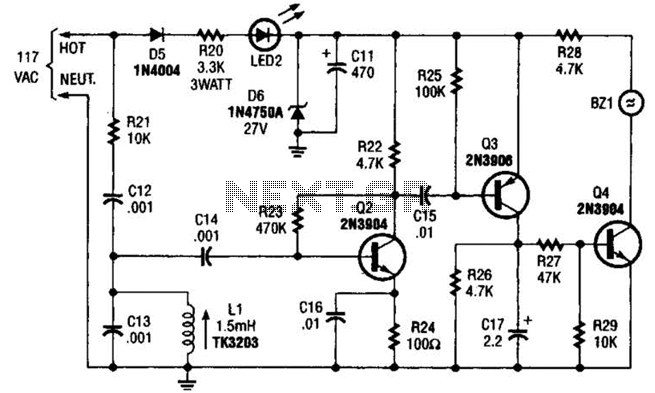
The baby-alert receiver consists of three transistors: Q2, configured as a high-gain linear amplifier; Q3, functioning as both an amplifier and detector; and Q4, which operates primarily as a switch. Additionally, there are several other components involved. The system activates an alarm (BZ1) upon receiving a 125-kHz signal from an alarm transmitter through the 120-V power lines.
The baby-alert receiver circuit is designed to monitor and respond to specific frequency signals, providing an effective alert system for caregivers. The core of the circuit involves three transistors, each serving a distinct purpose to achieve optimal performance.
Transistor Q2 is configured as a high-gain linear amplifier, which amplifies the incoming signal to a sufficient level for further processing. This amplification is critical, as it ensures that even weak signals can be detected and processed effectively. The high-gain configuration allows for minimal distortion, preserving the integrity of the signal.
Transistor Q3 operates in dual capacity as both an amplifier and a detector. In its amplifier role, it further boosts the signal received from Q2, ensuring that it is strong enough for detection. As a detector, Q3 identifies the presence of the specific 125-kHz signal emitted by the alarm transmitter. This dual functionality is essential for the circuit's ability to discern the intended alarm signal from potential noise present in the environment.
Transistor Q4 acts as a switch, controlling the activation of the alarm (BZ1). When Q3 detects the 125-kHz signal, it triggers Q4, which completes the circuit to the alarm. This switching mechanism allows for immediate response to the detected signal, ensuring that the alarm is sounded promptly to alert caregivers.
The additional components in the circuit may include resistors, capacitors, and diodes, which work together to stabilize the circuit, filter out noise, and protect the transistors from voltage spikes. The inclusion of these components is vital for the reliability and longevity of the baby-alert receiver.
The system operates by receiving the 125-kHz signal through the existing 120-V power lines, which serves as a convenient method for signal transmission without requiring additional wiring. This feature enhances the practicality of the baby-alert receiver, making it suitable for various applications in monitoring and alert systems. Overall, the design emphasizes efficiency, reliability, and responsiveness, making it an effective solution for alerting caregivers to the presence of an alarm condition. The baby-alert receiver is comprised of three transistors: Q2, which is configured as a high-gain linear amplifier; Q3, which serves as both an amplifier and detector; and Q4. which is essentially used as a switch; and a few additional components. It sounds an alarm BZ1 on receipt of a 125-kHz signal from an alarm transmitter via the 120-V power lines.
The baby-alert receiver circuit is designed to monitor and respond to specific frequency signals, providing an effective alert system for caregivers. The core of the circuit involves three transistors, each serving a distinct purpose to achieve optimal performance.
Transistor Q2 is configured as a high-gain linear amplifier, which amplifies the incoming signal to a sufficient level for further processing. This amplification is critical, as it ensures that even weak signals can be detected and processed effectively. The high-gain configuration allows for minimal distortion, preserving the integrity of the signal.
Transistor Q3 operates in dual capacity as both an amplifier and a detector. In its amplifier role, it further boosts the signal received from Q2, ensuring that it is strong enough for detection. As a detector, Q3 identifies the presence of the specific 125-kHz signal emitted by the alarm transmitter. This dual functionality is essential for the circuit's ability to discern the intended alarm signal from potential noise present in the environment.
Transistor Q4 acts as a switch, controlling the activation of the alarm (BZ1). When Q3 detects the 125-kHz signal, it triggers Q4, which completes the circuit to the alarm. This switching mechanism allows for immediate response to the detected signal, ensuring that the alarm is sounded promptly to alert caregivers.
The additional components in the circuit may include resistors, capacitors, and diodes, which work together to stabilize the circuit, filter out noise, and protect the transistors from voltage spikes. The inclusion of these components is vital for the reliability and longevity of the baby-alert receiver.
The system operates by receiving the 125-kHz signal through the existing 120-V power lines, which serves as a convenient method for signal transmission without requiring additional wiring. This feature enhances the practicality of the baby-alert receiver, making it suitable for various applications in monitoring and alert systems. Overall, the design emphasizes efficiency, reliability, and responsiveness, making it an effective solution for alerting caregivers to the presence of an alarm condition. The baby-alert receiver is comprised of three transistors: Q2, which is configured as a high-gain linear amplifier; Q3, which serves as both an amplifier and detector; and Q4. which is essentially used as a switch; and a few additional components. It sounds an alarm BZ1 on receipt of a 125-kHz signal from an alarm transmitter via the 120-V power lines.
